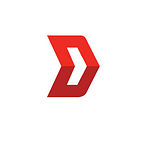The State of Freight in Europe with Julius Koehler
Future of Supply Chain Podcast, Episode 19
On Episode 19 of The Future of Supply Chain, we had the chance to sit down with Julius Kohler of sennder to discuss the current state of freight in Europe. Based in Berlin, sennder is the leading European digital freight broker. Sennder’s platform connects commercial businesses with freight carriers across the entire European Union, and offers real-time booking coupled with complete transparency within the supply chain. They have found the perfect spot between small and large carriers, and typically work with fleets of 10–50 vehicles. While most of these carries already have proprietary tracking, sennder is able to connect them with a myriad of different assisting carriers.
An industry filled with middlemen and underutilized supply
Julius opens our conversation with his thoughts regarding the current state of the European freight industry. Much like the United States, he believes that the process is still very traditional. Most booking is still done by fax, tracking is over the phone, and documents are still paper, which leads to a very low-tech industry. Julius’ number one concern for the industry is, the amount of middlemen who are fragmenting the industry. He says that there can easily be six layers of middlemen standing in the way of shippers and their logistic operators. Not only that, but middlemen can be taking up to 30% of the margin in freight forwarding. Julius also notes that the industry is still highly inefficient, with nearly 65% of vehicles going partly loaded, and the other 35% going completely empty. Lastly, Julius believes the lack of digitization is holding the industry back tremendously. He adds, “It should not be taking 45 minutes to book a shipment, we need to streamline the process.”. Platforms such as sennder are upsetting the status quo, and making the industry a less traditional process.
Driver supply a concern similar to the US
In another comparison to the US, the EU is experiencing similar driver supply problems. Roughly 70% of German truck drivers are older than 48, which means that two thirds of the workforce will be retiring in the next 15 years. This fast approaching mass exodus is worrisome to European companies, as they are concerned about the future of the industry. Companies are worried about products not being on shelves 5–10 years from now, because of the driver shortage becoming increasingly larger. It does not help that the EU incorporates a vast selection of different sized trucks within the supply chain. In order to accommodate the smaller roads and stricter traffic laws, logistic companies also have to match the delivery with a certain type of transportation. Platforms such as sennder, are able to do just that.
A future of digitization, optimization, and automation
“Technology is key for the future of the industry”, argues Julius. He believes that most of the problems associated with supply chain could be mitigated with the right platforms. Problems such as delivery inefficiencies and driver shortages are easily solved through digitization, optimization, and automation. In Europe alone, only 10% of loads are actually GPS tracked, and most carriers do not possess a streamlined dispatching system. Going forward, it will be crucial for companies to enhance their transparency. Customers want to know exactly where their deliveries are, when they are arriving, and expect dynamic time windows for every order. This is where we will see tech-enabled brokerages, such as sennder, excel in the years to come.
The Future of Supply Chain is a Dynamo podcast that brings entrepreneurs, investors, and industry veterans together to discuss their stories, views on the industry, and how we can collectively build the future of supply chain.
Listen on iTunes, Stitcher, Overcast, SoundCloud or your favorite podcast app. We appreciate a review and rating!
